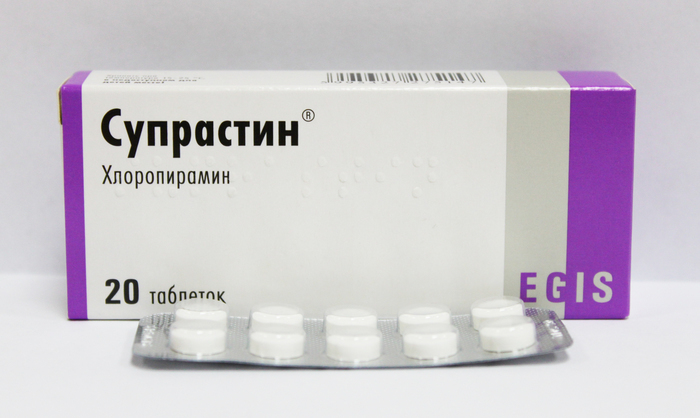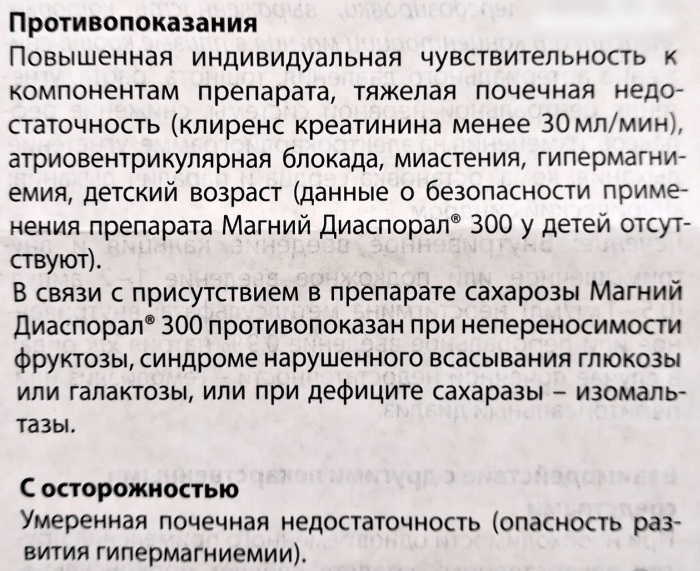Diacarb and Asparkam is a medicine with completely different therapeutic properties, which are indicated for use in those clinical situations, when it is necessary to achieve a pronounced diuretic effect, but at the same time to prevent the loss of potassium ions and magnesium. Taking these drugs can be prescribed to patients of the adult age group, as well as children over 3 years old.
The combined use of Diakarb and Asparkam requires compliance with an individual therapy regimen, which is developed by the attending physician. Violation of the dosage regimen with these medicines can provoke the appearance of negative symptoms.
Record content:
- 1 Release form, composition of the drug Diacarb
- 2 Asparkam composition, production form
- 3 Indications for the use of drugs, mechanism of action
- 4 Contraindications
- 5 The combined effect of taking Diakarb and Asparkam, interaction
- 6 Why are Diakarb and Asparkam appointed together?
- 7 When should you take both medicines at once?
- 8 When is joint reception prohibited?
-
9 Dosages and instructions for use of Diakarb and Asparkam together
- 9.1 For adults
- 9.2 Edematous syndrome
- 9.3 Open angle glaucoma
- 9.4 Epilepsy
- 9.5 For children
- 10 Possible side effects
- 11 What can replace drugs if one of them is missing?
- 12 The cost of drugs
- 13 Video about the drug
Release form, composition of the drug Diacarb
Diacarb is an effective drug that comes in the form of white round tablets, the active ingredient of which is acetazolamide at a dosage of 250 mg.
The following substances perform the auxiliary function of the medication:
- microcrystalline cellulose;
- magnesium stearate;
- silica;
- povidone;
- croscarmellose sodium.
Diacarb is packed in plastic blisters of 10 tablets each. The main packaging of this product is a cardboard box, inside which contains detailed instructions for the use of this drug. Diacarb belongs to the pharmacological group of diuretics, and this medication is also a carbonic anhydrase inhibitor.
Asparkam composition, production form
Asparkam is a drug that is produced in the form of round white tablets without a protective film.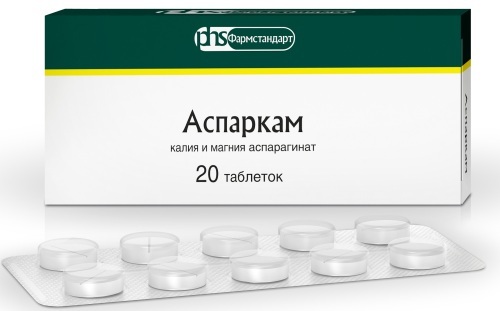
The active ingredients of this drug are the following substances:
- potassium asparaginate at a dosage of 175 mg;
- magnesium asparaginate at a concentration of 175 mg.
Asparkam has pronounced metabolic properties, and also replenishes the loss of mineral salts of potassium and magnesium, which are necessary to maintain the stable functioning of the cardiovascular system.
Packing of this medication is carried out in contour cell blisters of 50 tablets each. The main packaging of the drug is a cardboard box, complete with detailed instructions for the use of this tool.
Indications for the use of drugs, mechanism of action
Diacarb and Asparkam are drugs that belong to completely different pharmaco-therapeutic groups. The table below shows the main indications for the use of these medicines, and also describes the mechanism of their action on the human body.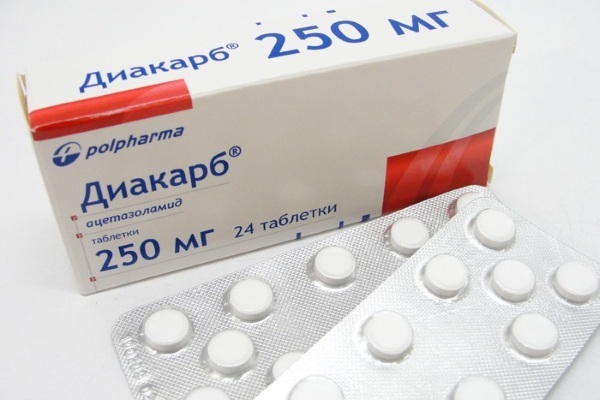
| Name of the medicinal product | Indications for use | Mechanism of action |
| Diakarb | Diakarb is a broad-spectrum diuretic. In this regard, this medication is indicated for use in the following cases:
Diacarb tablets are indicated for use during the period of postoperative rehabilitation in patients who have undergone ventricular bypass surgery. |
The active substance of the drug Diacarb in the form of acetazolamide suppresses the process of producing an excess amount of cerebrospinal fluid in the ventricles of the brain. The mechanism of action of this component is realized at the level of the plexus of the blood vessels of the central nervous system. After the drug Diacarb has overcome the blood-brain barrier, there is a gradual decrease in the negative charge inside the structure of ependyma cells. This leads to a decrease in the filtration activity of the plasma in relation to the ventricles of the brain. As a result of this process, the accumulation of excess fluid in the brain tissues is prevented, which makes it possible to reduce and prevent further increases in intracranial pressure. The moderate diuretic effect of Diakarb allows the use of this drug in the fight against the manifestations of edema syndrome. The mechanism of action of this drug completely stops 3 days after the completion of the course of acetazolamide. |
| Asparkam | The drug Asparkam is indicated for use for the complex treatment of diseases of the following types:
Asparkam can be prescribed to neutralize the negative consequences and complications caused by an overdose of the body with cardiac glycosides. In combination with Diacarb tablets, this drug has the effect of preventing and eliminating hypokalemia. |
Asparkam is a metabolic drug, as well as a source of magnesium and potassium ions. After entering the intestinal cavity, this medication is rapidly absorbed into the general bloodstream. Asparginate, which is part of Asparkam, performs a transport function for the transfer of potassium and magnesium into the intracellular space of tissues. This achieves the effect of activating metabolic processes, eliminating the imbalance of the main blood electrolytes. Asparkam has a beneficial effect on the function of the heart myocardium, reducing the excitability and conductivity of its tissues. This drug has mild antiarrhythmic properties. |

The appointment of the reception of Asparkam and Diakarb should be carried out only by the attending physician according to the results diagnostic examination of the patient's cardiovascular system, functions of the brain, kidneys and liver.
Contraindications
Diakarb and Asparkam (indications for the use of these medicines are displayed in the manufacturer's instructions) are drugs that have a number of restrictions on their appointment in therapeutic purposes. The table below lists the main contraindications for the use of these drugs.
| Name of the medication | Contraindications |
| Diakarb | The drug Diakarb is contraindicated for use in the following cases:
The drug Diakarb is prescribed with extreme caution to women who are in the 2nd and 3rd trimester of pregnancy, as well as to patients with the following diseases:
|
| Asparkam | The combined administration of Asparkam is contraindicated in patients diagnosed with hyperkalemia, as well as acute or chronic renal failure. The rest of this medication has no direct medical contraindications. |
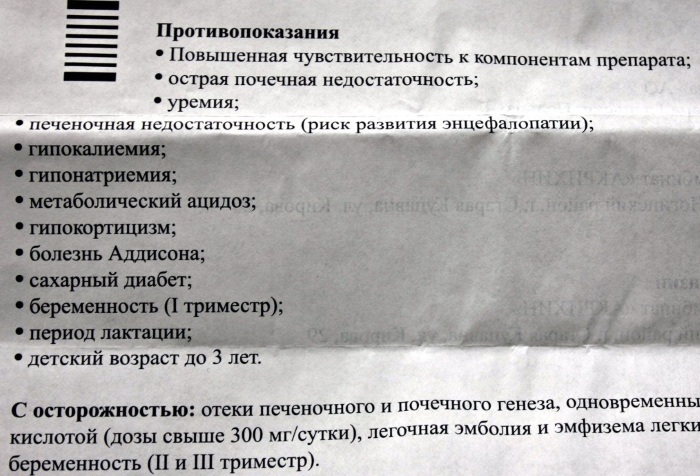
Depending on the general state of health of the patient, the presence of concomitant pathologies of internal organs and systems life support, the attending physician may detect other factors that exclude the possibility of taking Asparkam and Diakarba. For example, an increased risk of side effects.
The combined effect of taking Diakarb and Asparkam, interaction
Diacarb and Asparkam (indications for the use of these drugs are enshrined in therapeutic protocols for the prevention of hypokalemia) have a positive drug interaction.
The principle of realizing the joint therapeutic effect of these two drugs is the fact that the diuretic properties of Diakarb do not disturb the electrolyte balance in the body the patient.
The moderate diuretic effect of this drug leads to the fact that potassium and magnesium ions are washed out along with urine. This negative process causes an imbalance of mineral salts, the functions of the respiratory, cardiovascular and nervous systems are disrupted.
Simultaneous reception of Asparkam provides saturation of the patient's body with an additional source of potassium and magnesium. As a result, it is possible to avoid the development of a severe form of hypokalemia, the stable work of the heart, blood vessels, and the hematopoietic system is maintained.
Diuretic effect of Diakarb does not cause negative changes in the tissues of the patient's internal organs.
The simultaneous reception of Diakarb and Asparkam allows you to eliminate signs of an edematous state of the soft tissues of the musculoskeletal system, to reduce the volume of cerebrospinal fluid in the ventricles of the brain, reduce too high intracranial pressure, but at the same time do not disrupt intracellular metabolism associated with maintaining a stable concentration of magnesium ions and potassium.
Why are Diakarb and Asparkam appointed together?
Diakarb and Asparkam (indications for the use of these medicines are assessed individually) are prescribed in the form of a combined reception to enhance the properties of these drugs, but at the same time preserve the health of internal organs and life support systems of the body sick.
Diakarb:
- prevents the development of intracranial hypertension;
- reduces intraocular pressure;
- positively affects the functions of the central nervous system.
Moreover, this therapeutic effect is achieved through the implementation of the diuretic properties of the drug.
Asparkam:
- prevents the loss of electrolytes;
- does not allow disruption of the myocardium of the heart, the appearance of muscle cramps;
- maintains stable blood pressure by maintaining the water-salt balance.
When should you take both medicines at once?
The simultaneous administration of these drugs is indicated if an adult patient or child is prescribed diuretic therapy with the drug Diacarb. In this case, the reception of Asparkam performs an auxiliary function that ensures the maintenance of the stability of intracellular metabolism.
The lack of a combined intake of Diakarb and Asparkam entails the development of hypokalemia, the appearance of which characterized by dysfunction of the central nervous system and activity of the heart rhythm, a feeling of pronounced weakness in the muscles, dizziness.
When is joint reception prohibited?
Combined therapy with Diacarb and Asparkam drugs is contraindicated in patients of all age groups who have the following diseases of the body:
- renal and hepatic failure, regardless of the reasons that provoked the development of this pathology;
- acidosis;
- oversaturation of blood with potassium ions;
- chronic insufficiency of the adrenal cortex;
- diabetes;
- violation of osmotic and acid-base balance, when toxic substances of nitrogen metabolism accumulate in the patient's blood;
- individual intolerance to the combination formula of these drugs, which is expressed in the form of allergic reactions;
- Addison's disease.
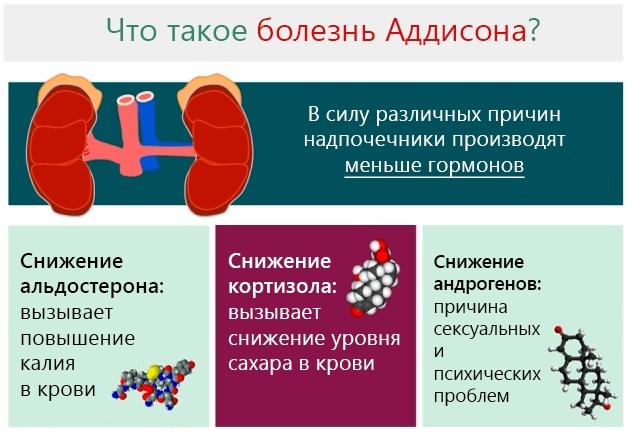
Before you start taking Asparkam and Diakarb together, you must be examined by a cardiologist, neuropathologist, as well as to get the advice of a specialized specialist on the subject of contraindications for combination therapy with data medicines.
Dosages and instructions for use of Diakarb and Asparkam together
Reception of Diakarb is allowed for children from 3 years old. For adults and patients of the younger age group, individual dosage regimens and treatment regimens with these drugs have been established.
For adults
Adult patients who do not have medical contraindications for the simultaneous use of Diacarb and Asparkam should take this drug for continuous therapeutic courses. The dosage regimen depends on the type of disease that requires treatment with acetazolamide.
Edematous syndrome
In the presence of signs of edema syndrome, adults are prescribed Diakarb at a dose of 250 mg in the morning. In the absence of signs of complications, the duration of the therapeutic course is 2 days. During this period of time, Asparkam is taken in a dosage of 1 tablet 2 times a day (morning and evening).
Open angle glaucoma
Therapy of open-angle glaucoma, which is caused by increased intraocular pressure, is carried out in combination with other potent drugs that stabilize the functions of the organ of vision. In the presence of this disease, Diakarb is prescribed 250 mg 1 to 4 times a day.
Taking a dose in excess of 1000 mg does not increase the diuretic effect of this medication. In this case, the duration of the therapeutic course is determined by the attending physician, but in most cases it is no more than 5 days. During this period, Asparkam is taken simultaneously at a dose of 1 tablet 2 times a day.
Epilepsy
Treatment of epileptic seizures with the drug Diacarb is carried out by taking this medication at a dosage of 250-500 mg of the active substance once a day. The duration of the course of therapy is 3 days. On the 4th day of treatment, a break of 24 hours is taken.
If necessary, the intake of the diuretic is resumed. During this period of time, Asparkam is taken 1 tablet 2 times a day or in doses determined by the attending physician.
For children
For children over 3 years old, a pediatrician, neurologist or cardiologist is involved in drawing up a combination therapy scheme with Diakarb and Asparkam. The selection of doses of Diacarb is carried out on the basis that 10 to 15 mg of the active substance of the drug should fall on 1 kg of the child's body weight. The daily dosage of this medication is divided into 3-4 doses.
The average duration of a therapeutic course is 5 days, after which a break is made for a period of 2 days. Children under 6 years of age should take 0.5 Asparkam tablets at the same time 2 times a day.
A child aged 6 to 11 years takes Asparkam in the same dosage, but already 3 times a day. Children over 12 years old, as well as older ones, drink 1-2 tablets of this drug 2 times a day. In conditions of prolonged therapy with Diakarb, not only the combined administration of Asparkam may be required, but also the use of a potassium-sparing diet.
Possible side effects
Diakarb and Asparkam (indications for the use of these medicines are determined by the attending physician based on the results of a diagnostic examination of the patient) can provoke the following side effects:
- nausea;
- a feeling of discomfort and heat in the epigastric region (this symptom most often occurs in patients who have concomitant diseases such as gastritis or cholecystitis);
- decreased susceptibility of the body to cardiac glycosides;
- aplastic anemia;
- allergic reactions of varying severity (from slight redness of the skin to anaphylactic shock);
- decreased appetite;
- violation of the sensitivity of taste buds;
- depressive state;
- a sharp change in mood;
- thrombocytopenia;
- metabolic acidosis;
- violation of orientation in space;
- confusion of consciousness;
- leukopenia;
- increased irritability;
- severe dizziness;
- hyponatremia;

- ringing sensation in the ears;
- liver necrosis, as well as inflammatory processes in the tissues of this organ;
- dry mouth, which cannot be eliminated even with the help of copious drinking;
- fever;
- muscle weakness;
- damage to kidney tissue;
- colic in the area of the ureter;
- headache;
- cramps of the lower extremities.
The bulk of the side effects that arise in the course of combination therapy are associated with the implementation of the therapeutic properties of the drug Diacarb.
Reception of Asparkam practically does not cause negative reactions of the body. The occurrence of even one of the above symptoms of the manifestation of the side effects of Diakarb or Asparkam is the basis for stopping further treatment with these medicines, or reducing the therapeutic dosages.
Combined treatment with these drugs avoids the development of negative consequences and complications associated with the diuretic properties of Diakarb.
What can replace drugs if one of them is missing?
In the absence of the drug Diacarb, it can be replaced with a drug with similar properties called Acetazolamide. This medication can be purchased in almost every pharmacy in the city, but it is dispensed only on the basis of a prescription from the attending physician.
Replacement of Asparkam can be carried out with drugs of the following types:
- Panangin;
- Panaspar;
- Potassium and magnesium asparaginate.
The above-mentioned analogues of Asparkam are characterized by a higher cost, but at the same time they have exactly the same therapeutic properties. The replacement of this drug must be agreed with the attending physician who originally prescribed this medication.
The cost of drugs
The average cost of Diakarb in retail pharmacy chains is 220 rubles. for 30 tablets. The price of the drug Asparkam ranges from 37 to 42 rubles. per pack of 20 tablets. The cost of analogues of this product in the form of Panangin and Panaspar is 118 and 220 rubles. respectively.
Diacarb and Asparkam are medicines that are indicated for use in adults and children, in need of gentle diuretic therapy aimed at reducing intracranial and intraocular pressure. The mechanism of action of Diakarb is that its active substance blocks the production of additional volume of cerebrospinal fluid inside the ventricles of the brain.
During the implementation of the diuretic properties of this medication, a loss of potassium and magnesium ions occurs, which can lead to an electrolyte imbalance. To compensate for the deficiency of these minerals, the drug Asparkam is included in the course of drug therapy.
Video about the drug
Asparkam or Panangin:

